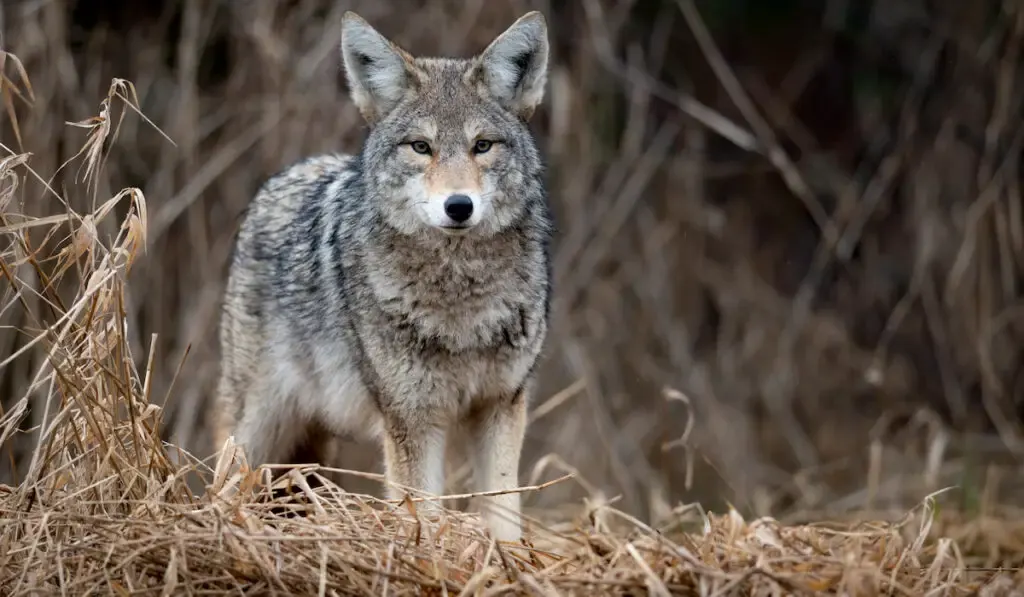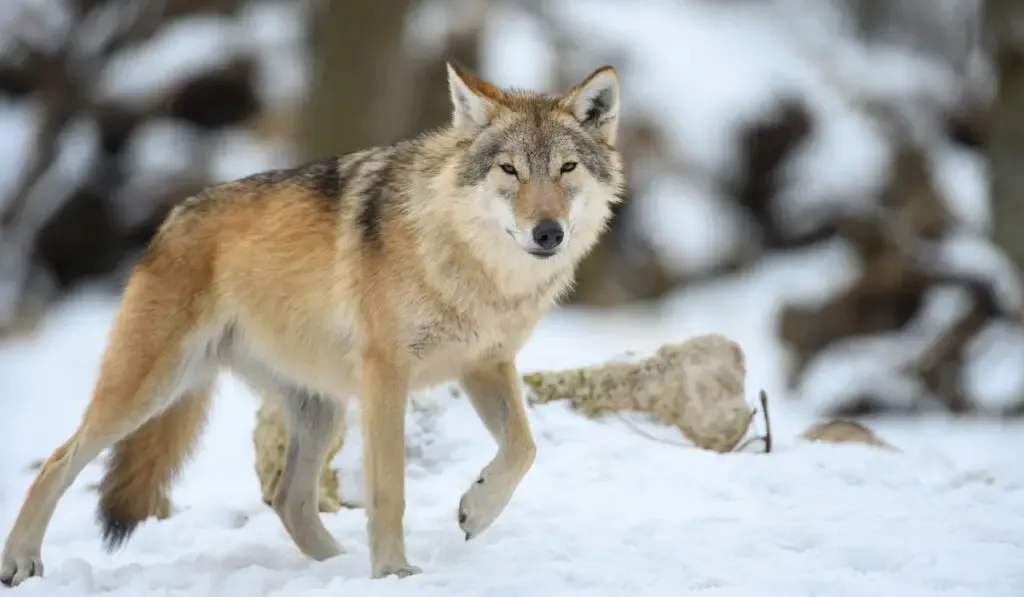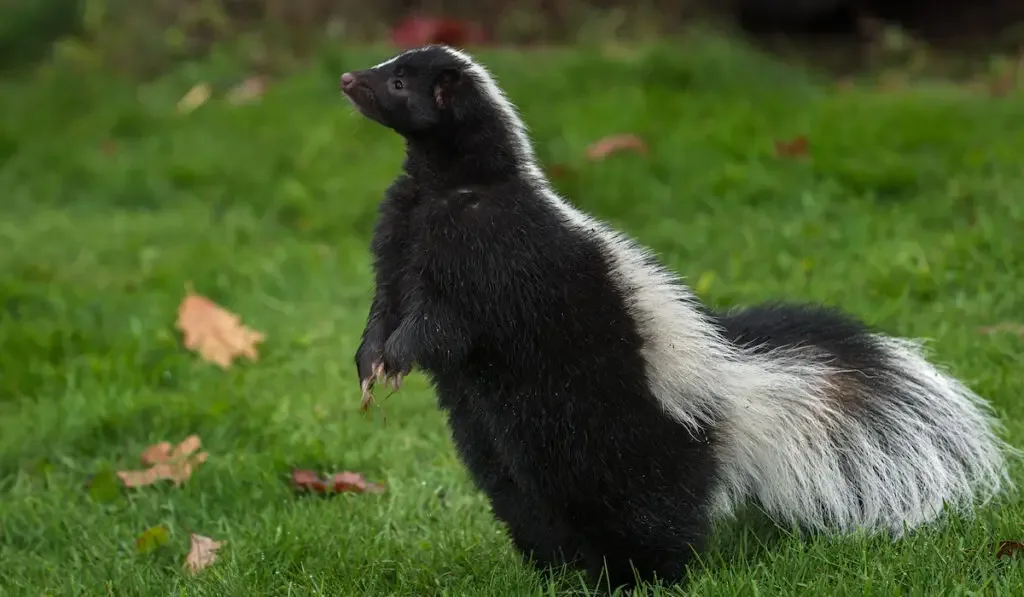The first thing that comes to our mind we heard the word “skunk” is the smelly, pungent odor that they release in the face of danger and threats in the wild. This powerful defense tactic helps skunks to survive in their habitat and most importantly, deters predators that could kill and eat them.
Although they are fast and agile and possess a fragrant deterrent, this doesn’t mean that these omnivores are free from becoming prey to much larger animals.
In this article, we will explore some of the animals that prey on skunks. Some of them are the apex predator at the top of the food chain, while others are simply carnivores.
Table of Contents
Great Horned Owls (Bubo virginianus)

Great horned owls are native to the Americas, including Central, North, and South America. They are also known as hoot owls and tiger owls. These large owls are highly adaptable and are the most widely distributed true owl species that inhabits forests, woodlots, suburbs, stream sides, and open country.
Great horned owls can be recognized by their large ear tufts, dark brown feathers, and lighter underparts with brown and horizontal barring. Their unique colorations contribute to their ability to camouflage and blend with their surroundings.
These owls feed on different small animals such as rodents, rabbits, opossums, ground squirrels, and even smaller birds such as ducks and geese. Due to their immunity to the smelly odor of skunk spray, great horned owls are one of the apex predators of skunks.
American Badgers (Taxidea taxus)
These badgers might look similar to European badgers but they are two totally different species.
American badgers can be found in the central, western, and eastern parts of the United States, from the west coast to Texas, Oklahoma, Missouri, Michigan, Ohio, Illinois, and Indiana. They generally inhabit open grasslands such as farmlands, edges of the woods, plains, and prairies.
American badgers can be characterized by their sturdy, flattened bodies, triangular faces, short legs, and stumpy tails. They have long, black and brown fur with white stripes on the cheeks and a single stripe running from their nose to the back of the head.
These badgers are omnivores and feed on various food including small burrowing animals such as woodrats, deer mice, pocket gophers, ground squirrels, and moles. Aside from skunks, they also prey on rattlesnakes, fish, amphibians, and insects.
Eagles (Haliaeetus leucocephalus)
Cougars (Puma concolor)

Cougars are also known as mountain lions, pumas, catamounts, or panthers. They inhabit rocky deserts and forests of South America and Canada. These agile predators possess the same body type as house cats, except much, much larger.
Cougars generally weigh around 100 pounds and stand between 21 and 28 inches at the shoulder. They have slender bodies, round heads, pointed ears, grayish tan to reddish color coat, and lighter underparts. Unlike other large cats that can roar, cougars can only purr like house cats.
Being nocturnal, they frequently hunt at night for prey such as porcupines, skunks, raccoons, coyotes, deer, mountain goats, caribou, elk, pronghorn, and American badgers.
Red-tailed hawks (Buteo jamaicensis)
Red-tailed hawks are commonly found in North America perching on edges of trees, light posts, and even telephone poles. They inhabit many different regions such as urban areas, prairie groves, woodlands, open country, desert, coniferous forests, and mountains. In the United States, they are also known as “chickenhawks.”
Red-tailed hawks come in different variations based on their natural habitats. But most eastern adult hawks can be recognized by their reddish-orange tails, dark bands across the belly, and creamy to pale underparts. Meanwhile, the western adults possess darker to white plumages.
Most of the time, these hawks hunt by perching from a higher place before swooping down to capture the prey using their strong talons.
Their diet includes mammals such as rats, rabbits, skunks, ground squirrels, voles, and other small birds. Occasionally, they also feed on reptiles, amphibians, fish, bats, and insects.
Coyotes (Canis latrans)

Bobcats (Lynx rufus)
Dogs (Canis lupus familiaris)
Although dogs are one of the great companions for humans, these canines can definitely kill skunks. In fact, trained dogs will protect their owner’s house from any outside threats, at all costs. They perceive skunks as intruders and attack them instantly.
Domestic dogs might not hunt as actively as coyotes, or even eat skunks. But out in the wild, dogs are capable of preying on skunks.
In some cases, skunks can deter dogs through the use of their smelly liquid. However, if they are being chased by a group of dogs, their chance of making it out alive is fairly slim.
Red Foxes (Vulpes vulpes)
Red foxes are the most common foxes that can be found in many regions including North America, northern Africa, Europe, and Asia. In the United States, they can be found from Alaska to Florida.
These largest true foxes are physically similar to dogs and other canines, but they behave more like cats.
Red foxes can be recognized by their red coats, long snouts and whiskers, pointed ears, and fluffy white-tipped tails.
Like other nocturnal animals, they usually hunt at night in gardens, forests, backyards, and secluded parks. Red foxes aren’t picky eaters and they feed on many things such as smaller mammals, rodents, skunks, rabbits, birds, insects, frogs, snakes, and fruits. They will also dig up the garbage and trash cans in search for food.
Wolves (Canis lupus)

Commonly known as one of the apex predators for ground animals, wolves are native to North America and Eurasia. These large, wild carnivores usually hunt in packs and move aggressively whenever they are on the hunt.
Depending on regional differences, wolves’ coats come in different colors ranging from gray, brown, black, white-flecked, to all white, especially for subspecies in the arctic region.
With their strong bodies, powerful legs, and acute predatory instincts, they are capable of chasing their prey at 37 miles per hour.
Depending on the size of the pack, wolves will hunt different animals including beaver, skunks, hares, small rodents, deer, bison, elk, caribou, musk-oxen, and other small to large animals.
Civets (Viverridae)

Final Thoughts
Skunks can definitely ward off some of the terrestrial predators by spraying a foul-smelling liquid from the anal glands. However, this defense tactic is not quite effective when they are faced with aerial predators. This is because animals like eagles, red-tailed hawks, and great horned owls can easily strike them from the sky, especially in open areas.
Furthermore, some birds also have little to no sense of smell. Thus, all the more reasons why skunks should be more aware of all the flying predators.
Citations
- https://faunafacts.com/skunks/what-eats-skunks/
- https://animalhype.com/facts/what-eats-skunks/
- https://kidadl.com/fun-facts/what-eats-skunks-top-predators-we-bet-you-didn-t-know
- https://factsking.com/animal-facts/predators-of-skunks/
- https://ebird.org/species/grhowl
- https://www.nationalgeographic.com/animals/mammals/facts/american-badger
- https://www.worldanimalfoundation.com/advocate/wild-animals/params/post/1292878/eagles
- https://animalfactguide.com/animal-facts/cougar/
- https://www.audubon.org/field-guide/bird/red-tailed-hawk
- https://urbancoyoteresearch.com/coyote-info/general-information-about-coyotes
- https://wildcatconservation.org/wild-cats/north-america/bobcat/
- https://animaldiversity.org/accounts/Vulpes_vulpes/
- https://animalcorner.org/animals/wolves/
- https://www.nparks.gov.sg/gardens-parks-and-nature/dos-and-donts/animal-advisories/civets
- https://www.dimensions.com/element/cougar
- https://www.dimensions.com/element/coyote
